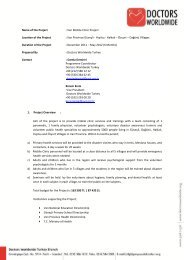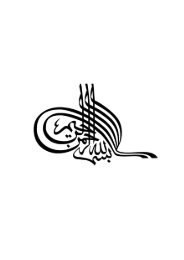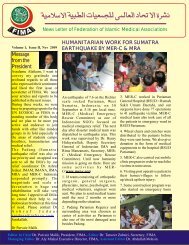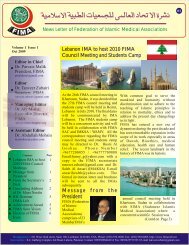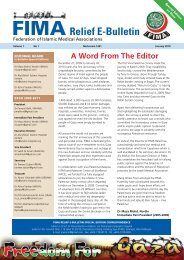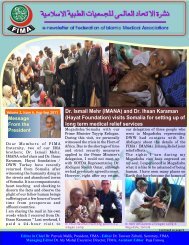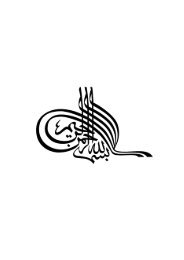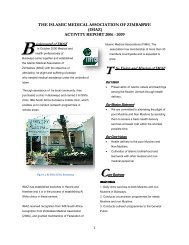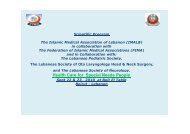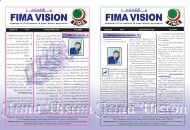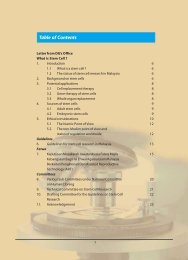FIMA Year Book 2009 - Federation of Islamic Medical Associations
FIMA Year Book 2009 - Federation of Islamic Medical Associations
FIMA Year Book 2009 - Federation of Islamic Medical Associations
Create successful ePaper yourself
Turn your PDF publications into a flip-book with our unique Google optimized e-Paper software.
Quality AssuranceIntroduction:Quality is the means through whichan institution can guarantee, withconfidence and certainty that thestandards <strong>of</strong> its educational objectivesmaintained and enhanced. Quality inhigher education is a dynamic processwhich is the outcome <strong>of</strong> interaction<strong>of</strong> multiple factors that determinethe state <strong>of</strong> equilibrium reached atvarious levels. These include, inter alia,leadership, quality <strong>of</strong> faculty, quality<strong>of</strong> students, infrastructure, facilities,research and learning environment,governance, strategic planning,assessment procedures, market forcesand several other factors dependingupon the type, nature and level <strong>of</strong>educational processes. (1)How quality and standards are different?Several keywords, <strong>of</strong>ten confused,require to be defined. Firstly, it isimportant to be clear that whereas‘quality’ relates to process (for example,the quality <strong>of</strong> the educational processexperienced by students), ‘standards’refers to outcomes, or achievement.The link between them can beexpressed in terms <strong>of</strong> the contribution<strong>of</strong> the educational process (or ‘quality’),to the attainment <strong>of</strong> a defined standard<strong>of</strong> higher education. Secondly, ineducation, standards relate to threeareas <strong>of</strong> activity: academic standardsmeasure ability to meet a specifiedlevel <strong>of</strong> academic attainment; servicestandards assess service provided; whilequality standards can be describedas norms or expectations expressedin formal statements about desiredpractice, for example the ENQAStandards and Guidelines. (2)Quality control in medical educationand training comprises activities atdifferent levels <strong>of</strong> the curriculum <strong>of</strong>medical schools, residency programsand postgraduate education. In <strong>Islamic</strong>theology quality arises from innermotivation and emanates from ihsan(excellence) which is the greatestachievement in <strong>Islamic</strong> work afterIslam and iman. Quality culture isan indigenous product <strong>of</strong> <strong>Islamic</strong>civilization. Islam sets quality work andexcellent performance in all spheres<strong>of</strong> life including education. Qualityand its controlling mechanisms mustpermeate all activities. The <strong>Islamic</strong>concept <strong>of</strong> performance <strong>of</strong> a job is toachieve excellence. The Prophet saidthat Allah loves ihsan in everything andadvised Muslims to perfect every workthat they undertake.In Western societies the concept <strong>of</strong>quality and Total Quality Management(TQM) was introduced in highereducational institutions not verylong ago. However, it has rapidlypermeated the thinking <strong>of</strong> manyhigher education managers duringthe past several years. It was basicallyintroduced, developed and applied inthe industrial environment where itnot only gained high acceptance, butalso has become a symbol <strong>of</strong> quality.Institutions have always held academicexcellence and high quality as the<strong>FIMA</strong> <strong>Year</strong><strong>Book</strong> <strong>2009</strong>156




